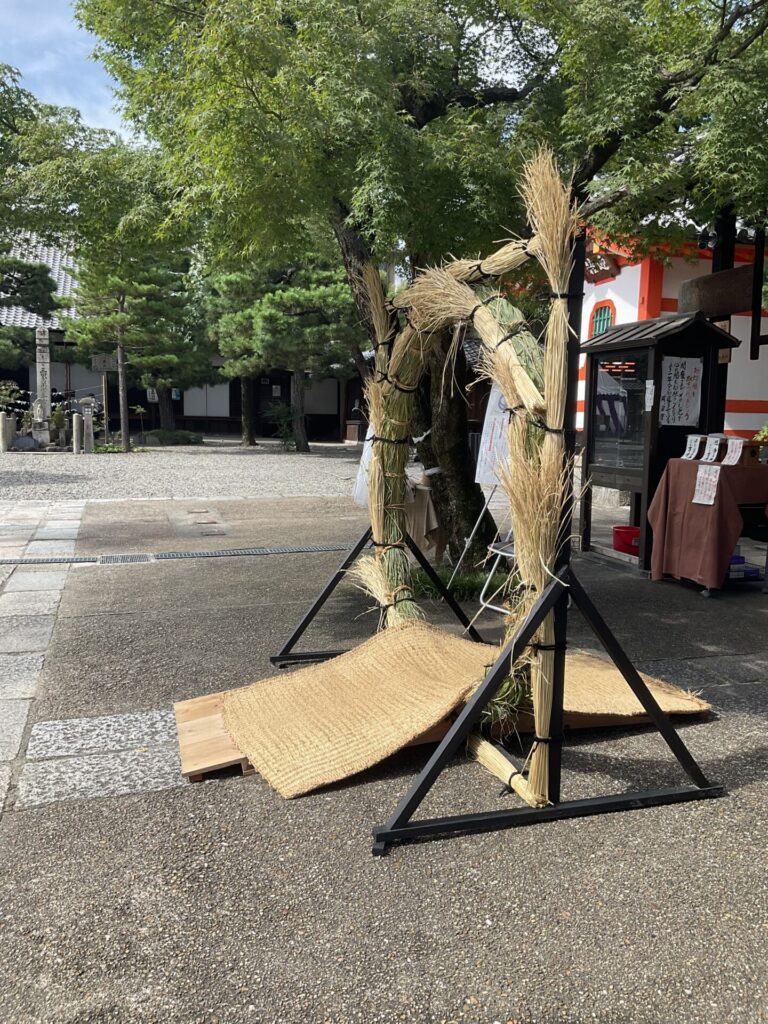
6月30日に茅の輪をくぐると、心身を清めて病を避けることができるとされています。日本の夏は暑くて湿度が高く、クーラーなどがなかった時代には、疫病が流行りやすかったそうです。昔の人々は栄養状態も悪かったので、病気にかかれば命を落とすことも多かったようです。そこで、暑い夏を健康に過ごすための祈りを込めて、昔の人々は茅の輪をくぐったそうです。他にも、夏を健康に過ごすために、貴族たちは氷を食べていました。しかし、氷はあまりに高価だったため、氷が買えなかった庶民たちは、氷に似たお菓子を食べて健康を祈っていました。
On June 30th, it is believed that passing through the Chi-no-Wa ring (the reed ring)can purify the mind and body and help avoid illness. Summers in Japan are hot and humid, and in times before air conditionings are invented , epidemics were common. People in the past also had poorer nutrition, so falling ill often meant losing their lives. To pray for health during the hot summer, people would pass through the Chi-no-Wa ring. Additionally, to stay healthy in the summer, aristocrats would eat ice. However, since ice was extremely expensive, common people who couldn’t afford it would eat sweets resembling ice and pray for good health.
この茅の輪くぐりは、迷信とも言えますが、厳しい環境下で生きてきた人々の、祈りを込めた祭りだったと考えられます。
The Chi-no-Wa Kuguri ritual could be considered a superstition, but it can also be seen as a festival imbued with the prayers of people who lived through harsh conditions.
一般的には6月30日の行事ですが、神社によって違います。これは去年の7月に京都六道珍皇寺で撮影した茅の輪です。
Typically, this event takes place on June 30th, but the date can vary depending on the shrine. This photo of a Chi-no-Wa ring was taken last July at Rokudo Chinnoji Temple in Kyoto.


コメント